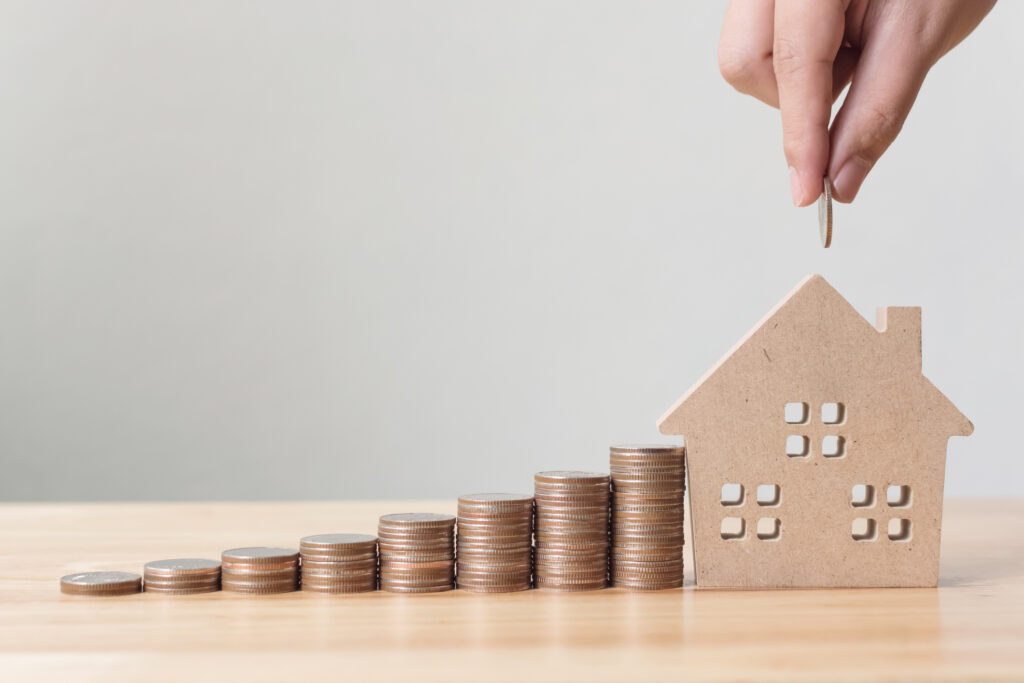What Are Flip Loans?
Flip loans, also known as rehab loans, are a type of financing used by real estate investors to purchase and renovate distressed properties before reselling them for a profit. flip loan allow investors to buy properties that need significant repairs, make the improvements, and then quickly resell the home.
A flip loan combines the purchase price and estimated renovation costs into a single mortgage loan. This provides the capital needed upfront to acquire and fix up the property.
How Flip Loans Work
With a flip loan, the purchase price and rehab costs are rolled into one loan at the time of acquisition. The investor does not have to spend their own cash on repairs. The loan proceeds can cover both the home purchase and renovations.
Flip loans are generally short-term loans with an average duration of 6 to 12 months. Investors need to refinance or sell the property once renovations are complete.
Pros of Flip Loans
- Access to capital for purchases and repairs
- No need for cash reserves
- Fast loan underwriting and funding
Cons of Flip Loans
- Higher interest rates and fees
- Short repayment periods
- Strict lender requirements and criteria
Flip loans allow real estate investors to take on fixer-upper projects they may not otherwise be able to afford. However, they come with risks if the market shifts or renovations go over budget. Thorough planning is essential when using this type of financing.
Types of Flip Loans
Flipping houses typically requires financing above and beyond traditional mortgage loans. There are several types of loans tailored specifically for investors who buy properties, renovate them, and quickly resell for profit.
Hard Money Loans
Hard money loans are a popular financing option for house flippers. Private lenders provide these short-term, high-interest loans, using the property itself as collateral rather than the borrower’s credit. Hard money loans can be obtained much faster than bank loans, making them ideal for investors who need to move quickly. However, hard money loans typically have higher interest rates and fees.
Bridge Loans
Bridge loans are a short-term financing option meant to “bridge the gap” between buying and selling a property. Investors can access quick funds for the purchase and initial rehab costs. Then the loan is repaid when the renovated home is sold. Bridge loans carry higher interest rates but allow flippers to access capital fast.
Rehab Loans
Rehab loans or renovation loans combine a mortgage with funds for remodeling a rundown property. With a rehab loan, flippers can finance both the home purchase and improvement costs within a single loan. These loans also tend to have higher rates than conventional mortgages.
FHA 203k Loans
FHA 203k loans are government-backed mortgages that include money for renovations. Homebuyers or investors can purchase a property and bundle repair costs into the mortgage. 203k loans require more paperwork but offer competitive interest rates. These loans can be great for flippers who qualify.
Qualifying for a Flip Loan
Flipping houses can be a lucrative investment strategy, but securing financing requires meeting certain qualifications. When applying for a flip loan, lenders will evaluate your credit, income, and down payment amount.
Credit Score
Your credit score is one of the most important factors lenders consider. Most flip lenders look for a minimum score around 600, though some may accept lower. The higher your score, the better the loan terms will be. With a score of 720 or above, you’ll qualify for the lowest interest rates.
Income Requirements
Lenders want to see you have enough income to comfortably make the loan payments. Expect to provide documents like tax returns, bank statements, and profit/loss statements from your business if self-employed. There are no set income thresholds, but most lenders look for annual income of at least $50,000. Higher incomes improve your chances of approval.
Down Payment
Putting down a larger down payment signals to lenders you have “skin in the game.” Typical down payment requirements for flip loans range from 20-30% of the purchase price. Some lenders may offer loans with less down, but you’ll pay a higher interest rate. Bringing 30-40% or more to the table puts you in a better position to qualify and get better loan terms.
The key is showing lenders you have the financial means and credit history to take on the risks of a flip project. Meeting the typical requirements above improves your chances of securing financing at competitive rates.
Finding a Flip Loan Lender
There are several options for securing financing to fund a house flipping project. The main types of lenders that provide flip loans include:
Banks
Banks offer conventional mortgage loans and home equity lines of credit (HELOCs) that can be used for house flipping. However, banks typically have stricter qualification requirements and will want to see that you have experience flipping houses successfully. They will require a down payment of around 20-25% and good credit. The advantage of bank loans is that they tend to have lower interest rates.
Hard Money Lenders
Hard money lenders specialize in providing short-term loans for real estate investors. They can fund up to 90% of the purchase and rehab costs and often have quicker processes than banks. However, hard money loans have higher interest rates and fees. The loan terms are usually around 1 year. Hard money lenders focus more on the projected after-repair value (ARV) of the property rather than your credit score.
Private Lenders
Private lenders are individuals who lend their own money for real estate investments. This can include friends, family, business associates, etc. Private lenders offer more flexible terms than banks but usually still require a good credit score, down payment, and solid business plan. Interest rates are negotiable but tend to be higher than bank loans. The benefit of private lenders is that they can close quickly. Drawbacks are that the loan terms are usually shorter and limits on how much they can lend.
When choosing a flip loan lender, compare interest rates, fees, loan terms, funding speed, experience with investors, and lending requirements. Weigh the pros and cons of each type of lender for your specific flipping project.
Flip Loan Rates and Terms
Flip loans typically have higher interest rates and fees compared to traditional mortgages. This is because they are considered riskier for lenders. Here are some key things to know about rates and terms for flip loans:
Interest Rates
-
Interest rates on flip loans range from 8% to 15%, with an average around 12%. This is significantly higher than rates for conventional mortgages, which currently average 3-4%.
-
The higher rate accounts for the increased risk lenders take on with flip loans. Borrowers often have lower credit scores and the property itself is not yet renovated or habitable.
-
Interest rates may be fixed or variable. Variable rates fluctuate with market conditions while fixed rates remain the same over the life of the loan.
Loan Terms
-
Most flip loans have a term of 6 months to 2 years. Shorter terms of 6-12 months are common.
-
Loan terms correspond with the expected rehab and sale timeline. Borrowers need to be able to finish repairs and sell within the term to pay back the loan.
-
Extensions may be available but usually incur additional fees.
Fees
-
Origination fees for flip loans often range from 2-5% of the total loan amount. On a $100K loan that’s $2,000-$5,000.
-
Other common fees include application fees, processing fees, underwriting fees, and exit fees when the loan is paid off.
-
In total, fees for a flip loan can add 3-7%+ to the total cost.
-
Points can also be bought down to reduce the interest rate, at an additional upfront cost.
When evaluating flip loan rates and terms, pay close attention to the interest rate, loan duration, and total fees. A higher rate and shorter term signal a riskier loan that will be more expensive overall.
The House Flipping Process
Flipping houses is a multi-step process that requires significant time and effort to be successful. Here are the key steps involved:
Finding a Property to Flip
The first step is identifying a suitable property to purchase and flip. Investors should look for homes priced below market value that need mostly cosmetic repairs. Location and neighborhood are also important factors. Drive around target areas and look for signs of neglect like overgrown lawns, peeling paint, etc. Real estate agents can help uncover potential deals. Online sites like Zillow and auction sites can also surface flippable properties.
Purchasing the Property
Once a good flip candidate is identified, make an offer and negotiate the purchase price. Investors will likely need to pay cash or secure hard money loans that require a high down payment. Closing quickly and limiting contingencies can make an offer more appealing to sellers. Inspections should still be done to uncover major issues early.
Rehabbing the Property
This is the time and labor intensive part. Create a scope of work and get contractor estimates. Cosmetic upgrades like painting, flooring, fixtures can have a big impact. But don’t overlook critical items like roof, plumbing, HVAC that may need repair. Budget extra time and money for inevitable surprises. Regularly check in on the rehab work.
Selling the Property
List the property on the MLS and market to potential buyers. Hire a real estate agent to handle showings and negotiations. Stage and clean the home to showcase improvements. Be flexible on the sale price, especially if needed repairs blew the budget. Close the sale once an offer at the target price is secured.
Flipping houses takes diligence to control costs and quality. But successful flips can be quite profitable if each step is executed properly. The rewards make the effort worthwhile for many investors.
Tips for Successful Flips
Flipping houses can be risky, but following some best practices can help increase your chances of profitability. Here are some tips for flipping houses successfully:
Budget Appropriately
Create a detailed budget for your flip and stick to it. Factor in acquisition costs, repairs, holding costs, financing fees, contingencies, and your desired profit. Track expenses closely as the project progresses. Going over budget can quickly eat into your potential profits. Leave a 10-20% buffer in your budget for unforeseen expenses.
Vet Contractors Thoroughly
Find experienced, licensed contractors with good reviews and references. Get multiple bids for large projects. Check references thoroughly. Sign detailed contracts clearly outlining scope of work, timeline, requirements, and payment terms. Avoid paying for work upfront if possible. Oversee contractors closely and document their progress with photos.
Don’t Overimprove
Focus improvements on fixes that will maximize your return, not personal preferences. Go for functional over luxury – new kitchens and bathrooms add value, but avoid going overboard on finishes. Focus on repairs that make the home livable and safe. Curb appeal matters, but avoid extensive landscaping that won’t bring a good ROI. Know the comps and local market well.
Flip Loan Risks
House flipping can be risky if you don’t have experience or don’t plan properly. The most significant risks of using a flip loan include:
Not Selling for a Profit
The main risk when flipping a house is being unable to sell the renovated property for more than you purchased and invested in it. The housing market can shift during your renovation timeline, decreasing demand in the neighborhood or overall market. You may have to lower your asking price significantly or be unable to sell the home for a long time.
With a flip loan, this means continuing to pay loan interest and fees while earning no income from the property. You may eventually have to sell at a loss just to pay off the loan. Thoroughly researching the local market, setting a realistic budget and timeline, and having contingency plans can help avoid this scenario.
Delays
Behind schedule renovations are another common risk with flip loans. Delays can happen for many reasons, like contractor problems, permitting issues, defective materials, or unreliable subcontractors. If the rehab takes longer than expected, you continue accruing interest costs and property expenses with no rental income.
Build generous buffers into your renovation timeline and budget for contingencies. Vet contractors thoroughly and build penalties into contracts if they fail to finish on schedule. Be ready to bring in backup workers if needed.
Budget Overruns
It’s easy for renovation costs to spiral out of control, especially with unforeseen issues. Each extra week of work can mean thousands in additional loan interest payments. Exceeding your budget may prevent you from selling at a profit.
Work with experienced contractors to create accurate quotes for all work upfront. Get multiple bids for big projects. Pad estimates with a 10-20% contingency fund in case expenses run over. Take out a little extra financing if possible to cover cost overages.
Alternatives to Flip Loans
There are a few alternatives to consider if you don’t want to take out a traditional flip loan:
Cash Purchase
The most straightforward alternative is to purchase the property outright in cash. This avoids financing costs and loan payments during your remodel. However, few real estate investors have enough cash on hand to fully pay for flips upfront. You’d need a substantial amount of capital to buy multiple properties this way.
Home Equity Loan
If you have sufficient equity built up in your current home, a home equity loan or line of credit can provide funds for flipping houses. The borrowing rates and terms are usually better than hard money loans. Just be cautious about putting your own home at risk as collateral.
Hard Money Lenders
Hard money loans are a popular financing choice for house flipping. These non-bank lenders offer quicker approvals and funding compared to banks. However, hard money comes at a price – the interest rates are quite high. The loans are based on the property value rather than your credit, but you’ll likely need good experience and some capital. Hard money works best for short-term loans to cover construction.
The alternatives above provide more flexibility than traditional mortgages in terms of qualifying and faster access to funds. But they also come with higher costs or risks. Evaluate your options carefully when financing real estate flips.
Is a Flip Loan Right for You?
Flipping houses can be a risky yet rewarding endeavor for an experienced real estate investor. However, obtaining financing through a flip loan is not necessarily the right choice for everyone. As you consider getting a flip loan, be sure to thoroughly assess your goals, experience, market conditions, and financial situation.
Assess Your Goals
First, think about why you want to flip houses. Is it to generate quick cash flow, build long-term wealth, or just take on an exciting project? How much money do you need or want to make on each flip? Understanding your motivations and profit goals will help determine if a flip loan matches your desired flipping strategy.
Evaluate Your Experience
Next, realistically evaluate your experience level. Have you successfully completed house flips before? Do you have the right knowledge and skills for every step of the process – from finding a property, estimating rehab costs, managing contractors, to marketing and selling the finished home? Flipping houses is not easy, so having prior experience is key when using a flip loan.
Research Local Market Conditions
You also need to understand your local real estate market inside and out. Study house prices, days on market, average flip costs, and homebuyer demand. Markets with slower price growth and sales may not be ideal for flip loans, which require a quick turnaround. Focus on markets with strong buyer demand and low inventory to minimize your risk.
Assess Your Financial Situation
Finally, take an honest look at your current finances. Do you have enough cash on hand for the down payment on a flip property? Flipping requires substantial capital upfront. And if the flip runs over budget or takes longer than expected, do you have reserves to cover extra costs? Work through various scenarios to ensure you can manage unexpected expenses.
With realistic goals, flipping experience, in-depth market knowledge, and access to capital, a flip loan can be a strategic financing tool. Otherwise, the risks may outweigh the potential rewards. Carefully consider all these factors before moving forward with a flip loan.


